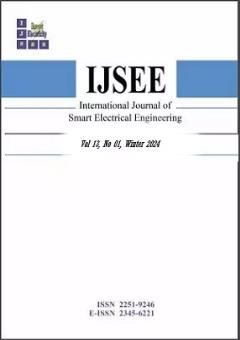Performance Analysis of InAs/AlGaSb Heterojunction Electron-Hole Bilayer Tunnel Field Effect Transistor for Low-Power High-Speed Digital Computing
محورهای موضوعی : مهندسی هوشمند برق
1 - Department of Electronic, Yadegar- e- Imam Khomeini (RAH) Shahr-e-Rey Branch, Islamic Azad University, Tehran, Iran.
کلید واژه: Electron-Hole Bilayer Tunnel Field Effect Transistor, Heterojunction, Workfunction, Band to band tunneling,
چکیده مقاله :
In this paper, a novel device, namely heterojunction electron-hole bilayer tunnel field effect transistor (HJ-EHBTFET), is proposed which outperforms conventional tunnel field effect transistor (TFET) in terms of electrical performance. The use of lattice matched InAs/Al0.6Ga0.4Sb material combination results in a broken band gap configuration, making it highly suitable for high speed ultra-low applications, as it requires smaller gate bias for the onset of tunneling. The impact of critical design parameters on the device performance is comprehensively investigated. The proposed device utilizes electrical doping instead of physical doping for the creation of tunneling junction, which effectively addresses the problem of low solubility of dopants in heavily doped III-V materials. The top gate and bottom gate workfunction are critical design parameters that effectively modulated the electrically induced charges at the tunneling junction and consequently, affect the tunneling rate. In order to obtain the lowest possible transition voltage for the onset of tunneling, a variation matrix of threshold voltage variation is computed as a function of gate electrode workfunction. Through this process, a step-like behavior from off-state to on-state has been achieved, with a subthreshold swing of 3 mV/dec and on/off current ratio of 5.8×1012, thereby paving the way for the design of low-power high-speed digital computing systems.
In this paper, a novel device, namely heterojunction electron-hole bilayer tunnel field effect transistor (HJ-EHBTFET), is proposed which outperforms conventional tunnel field effect transistor (TFET) in terms of electrical performance. The use of lattice matched InAs/Al0.6Ga0.4Sb material combination results in a broken band gap configuration, making it highly suitable for high speed ultra-low applications, as it requires smaller gate bias for the onset of tunneling. The impact of critical design parameters on the device performance is comprehensively investigated. The proposed device utilizes electrical doping instead of physical doping for the creation of tunneling junction, which effectively addresses the problem of low solubility of dopants in heavily doped III-V materials. The top gate and bottom gate workfunction are critical design parameters that effectively modulated the electrically induced charges at the tunneling junction and consequently, affect the tunneling rate. In order to obtain the lowest possible transition voltage for the onset of tunneling, a variation matrix of threshold voltage variation is computed as a function of gate electrode workfunction. Through this process, a step-like behavior from off-state to on-state has been achieved, with a subthreshold swing of 3 mV/dec and on/off current ratio of 5.8×1012, thereby paving the way for the design of low-power high-speed digital computing systems.


